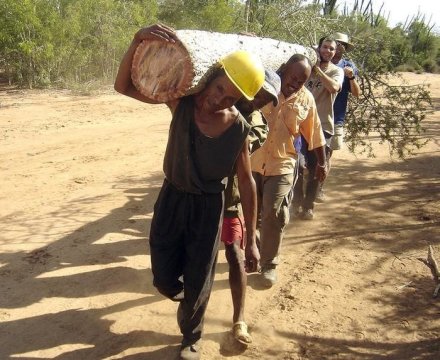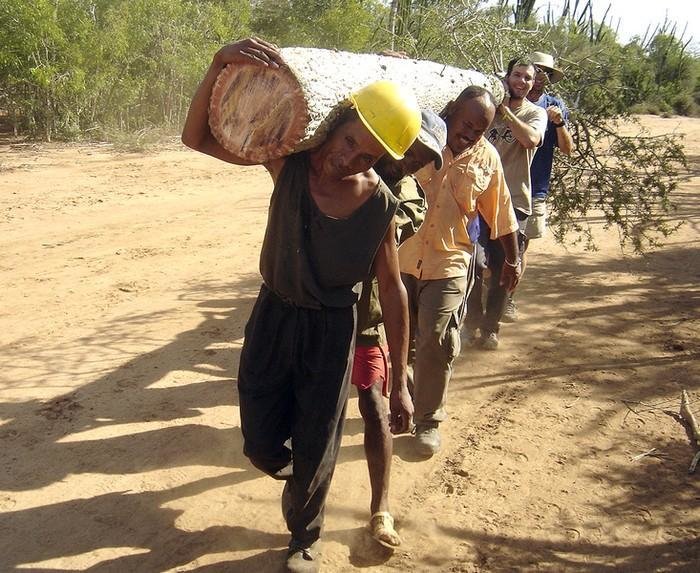[ad_1]

A tree cut from a dry forest in Madagascar to measure its wood density
Credit: © CIRAD, G. Vieilledent
It may be a small correction, but it is far from negligible as far as forest ecologists and carbon cycle specialists are concerned. The error lay in a formula established almost 50 years ago (in 1971) for calculating basic wood density. Given that basic density is used to assess the amount of carbon stored in a tree, the fact that the formula had to be corrected meant that forest carbon stocks may have been overestimated by 4 to 5%. “This new formula should enable us to determine more accurately the role of forests in the carbon cycle and the impact of deforestation on climate change” , says Ghislain Vieilledent, an ecologist with CIRAD who was the corresponding author of the work published in the journal American Journal of Botany on 16 October.
For more than 70 years, CIRAD has had a database on 1300 wood species and almost 4500 trees. It was when they came to promote this resource that Ghislain Vieilledent and his colleagues at CIRAD and at Paul Sabatier University in Toulouse discovered an incoherence in a conversion factor: the one used to compute the basic density of a tree based on wood density at 12% moisture, which corresponds to the average wood moisture content in temperate regions. Since this technical characteristic is widely available in wood technology databases, ecologists only have to apply a conversion factor to it in order to establish the basic density of a tree species. However, it was precisely that conversion factor that did not tally with the researchers’ new calculations. “To start with, I thought we had made a mistake in our calculations or that there was some uncertainty surrounding measurement of the relevant data. It was not easy to cast doubt on a formula that had been widely accepted for years and quoted in several scientific articles.”
The researchers took a new look at the data in CIRAD’s historic database in order to determine a new formula for establishing basic density based on density at 12%. The new conversion factor will be used to calculate the basic density of woods in forest ecology databases. In particular, it will serve to update the global wood density database on which Jérôme Chave and Fabian Fischer are working at CNRS-Paul Sabatier University in Toulouse, who were co-authors of the publication. The correction will make it possible to estimate carbon forest stocks more accurately and understand more clearly the role played by forests in climate regulation.
Story Source:
Materials provided by Cirad. Note: Content may be edited for style and length.
Journal Reference:
- Ghislain Vieilledent, Fabian Jörg Fischer, Jérôme Chave, Daniel Guibal, Patrick Langbour, Jean Gérard. New formula and conversion factor to compute basic wood density of tree species using a global wood technology database. American Journal of Botany, 2018; DOI: 10.1002/ajb2.1175
Cite This Page:
Cirad. “Forest carbon stocks have been overestimated for 50 years.” . , 16 October 2018. <www..com/releases/2018/10/181016110100.htm>.
Cirad. (2018, October 16). Forest carbon stocks have been overestimated for 50 years. . Retrieved October 16, 2018 from www..com/releases/2018/10/181016110100.htm
Cirad. “Forest carbon stocks have been overestimated for 50 years.” . www..com/releases/2018/10/181016110100.htm (accessed October 16, 2018).
[ad_2]















